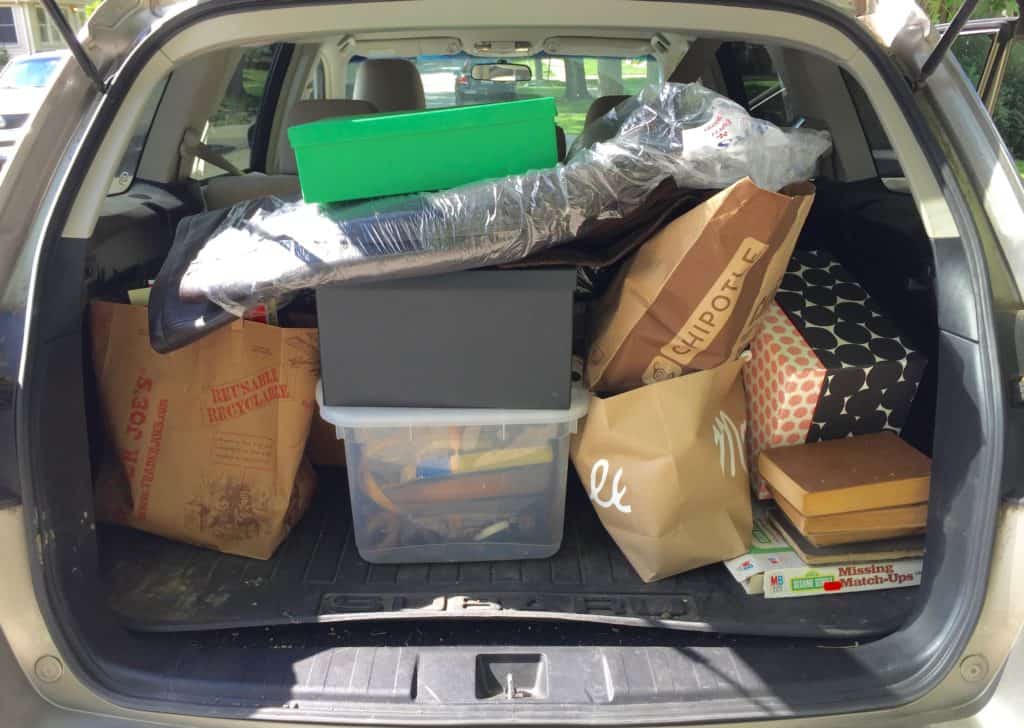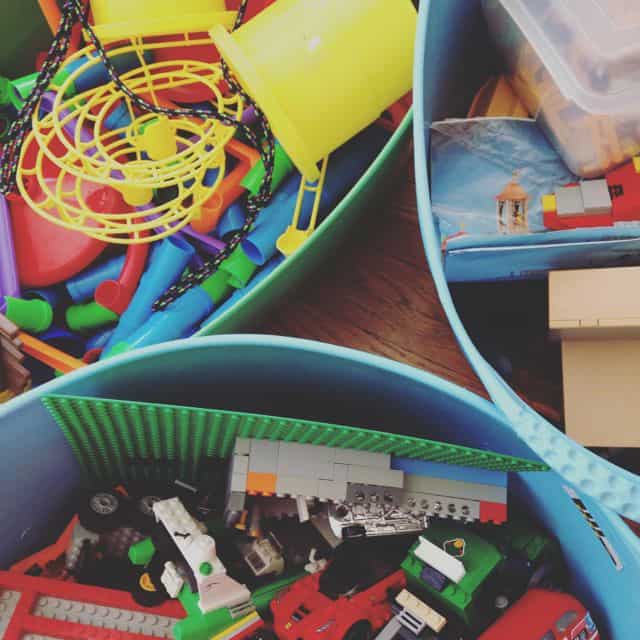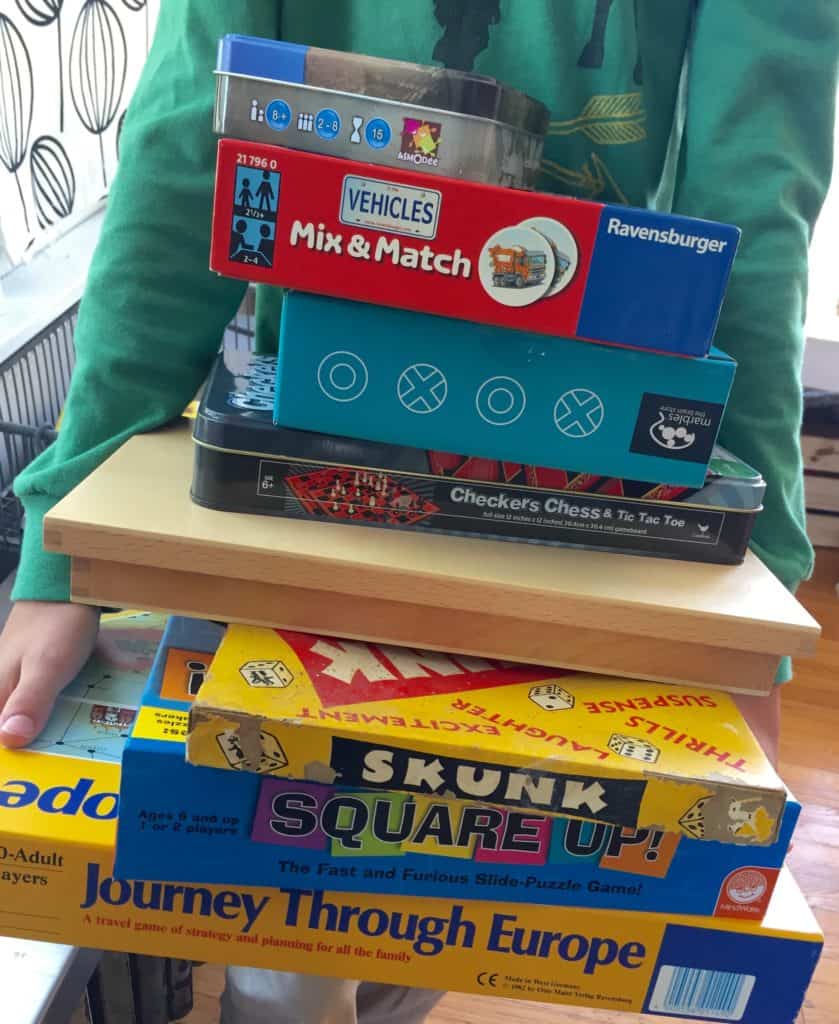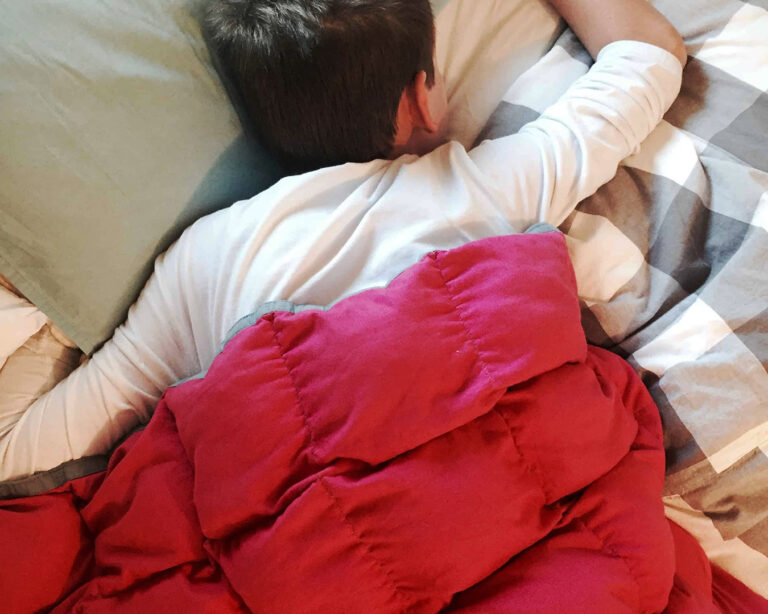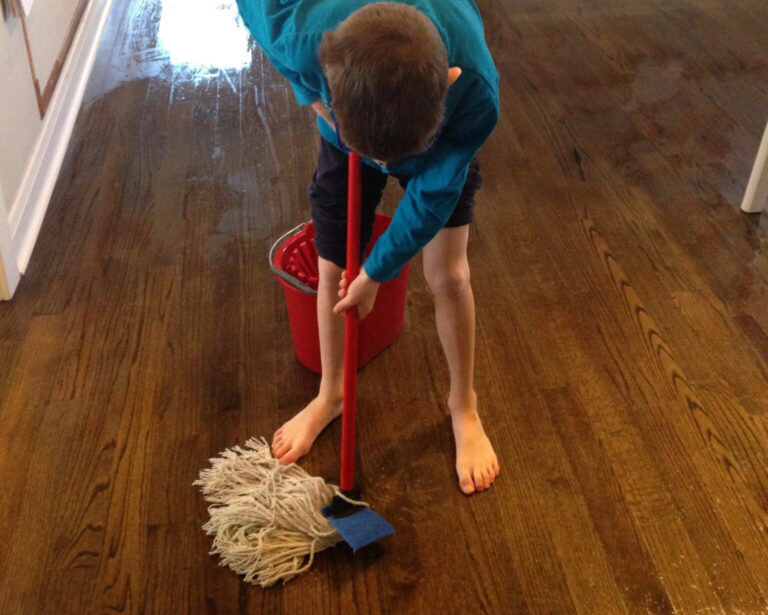Getting Kids to Declutter
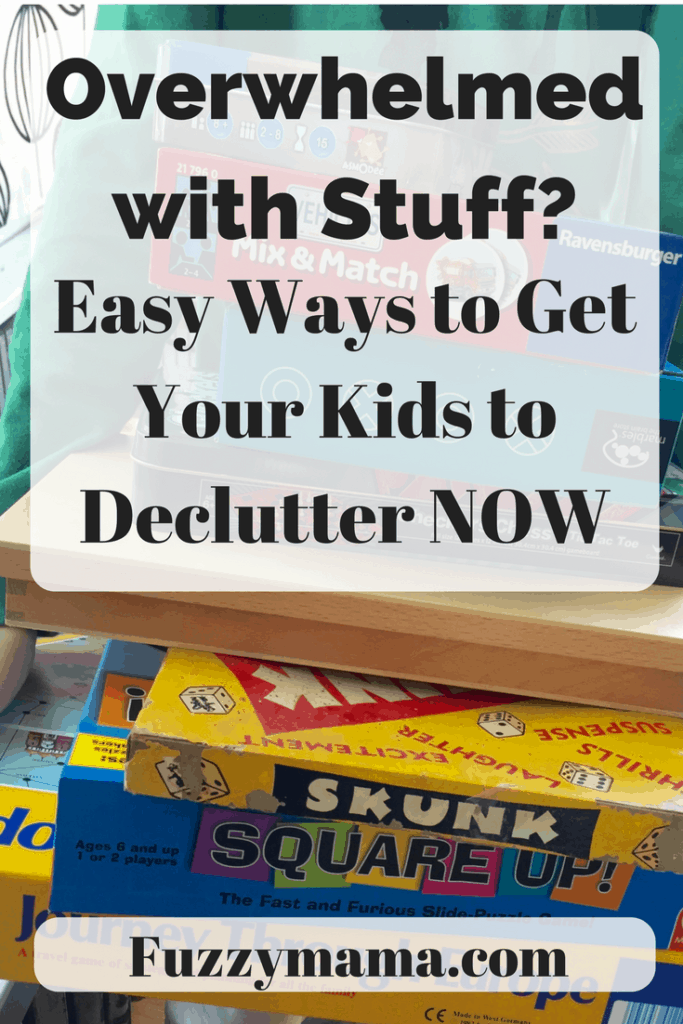
It is the rare household with kids that does not find themselves in seasons of drowning in stuff. It can become quite paralyzing and affect the entire household in ways you might not even correlate with the amassing of stuff. Cranky kids, crankier adults, lost toys, lost keys, fighting siblings, bored kids – can all be a result of having too much stuff.
As a parent, you can certainly have some part in clearing the clutter yourself. But why not try getting kids to declutter themselves? It may be easier than you think!
Make sure kids know the benefits of decluttering.
Kids often only see the negative in getting rid of things–they think of it as a loss. But you can turn their mindset around and get them thinking of what they have to gain by getting rid of clutter.
When kids get rid of something they are making way for new things to come -both figuratively and literally. They might not understand the good karma benefits of clearing out, but they will understand that clearing out can make way for new things to come in. We often clear right before birthdays and Christmas as a way of making way for new toys.
Of course clearing out is not just about filing up with new stuff. Decluttering is a chance for you to be very thoughtful and purposeful about what new items are brought into the house. The old 1 in 1 out rule is a great lesson to carry with them thru life. Just remember at first it may be 10 out and 1 in!
You may be able to help your kids sell some of their stuff and get cash. Depending on the items they purge, your kids could stand to make some decent money. We have sold many of my kids toys over the years–with their permission, of course. I encourage them to save any monies made and I use it as just another opportunity to talk about future purchases.
You can also talk about the good feeling you get when you give things away–so many people are able to benefit from a donation. Which brings us to the next point….
Teach them that decluttering has a benefit for others
That good feeling you get when you give your items away is just the beginning. Usually, there is a much greater benefit to the recipient of these items. Every time we drop things off at Goodwill, I talk about all the people that stand to gain something from our donation. Goodwill, The Salvation Army, and loads of other charities do such great work with both the donated items and the money they make from their retail outlets. That money can go a long way in serving people in need in your community.
If you give your items to a neighbor or family member(who truly wants them) your kids will get the benefit of seeing, first hand how those items can be loved, again and again. We have experienced this first hand ourselves, as the recipient of many hand me downs and so my boys are happy to pass things along to family and friends.
By focusing on the good feeling that you get when you give to those in need, you often override any feeling of sadness about loosing the item. It’s a good practice to get into if you want to raise kids who think of others needs, as well as their own.
Getting down to business: The knitty gritty how-to’s of Getting kids to declutter
There are many ways to help your kids get rid of clutter. Finding what works for them and you is the key. Here are a several ideas to get started:
Give your kids a finite storage option to help them decide what will stay. Prepare some statements, like,”Your toys must fit in this bin with the lid closed.” or “Keep only the books that fit on these two shelves.” When you set storage parameters you are not being the bad guy-the storage piece is setting the limits.
Model decluttering behavior. Kids follow what you do, not what you say. Be a good role model–they need to see you getting rid of things, as well. Also, talking about items that you give away will help kids to make decisions for themselves. “I did not need two crock pots, I never wear these shoes anymore.”
It is totally okay (and I recommend it) to keep a box for special, sentimental items. Those sweet little baby items that flood you with wonderful memories should be kept in a safe box. We have a box of clothes and baby things for each child. It is so fun to go thru them every once in a while and reminisce.
Give your kids a small goal. Give them a grocery bag and ask them to fill it with items they no longer need. Again, parameters can be so helpful. Fill the bag with clothes that don’t fit, or things they have not played with in 6 months or books that are too easy for them. Try setting a time limit of 30 minutes a week to go thru their closets or toy bins.
Be fun and light hearted about the whole process. Play music or dance around the house as you clear clutter. See how many “baskets” they can make as they throw their unwanted clothing items into the box for charity.
What if they just won’t part with much
Kids can be sentimental. If you have a kiddo that seems really upset by the whole process don’t push too much at first. Take the wait and see approach. If you can, have them gather items they don’t use often and keep them in a storage box out of sight. Ask again in a month or two–they may not even miss the items and be willing to part with them at a later date.
You may have to get in the trenches with them. Go thru their closet with them watching, make suggestions, offer guidance.
Talk about your own decluttering-let them see you getting rid of things-regularly.
Offer incentives that have nothing to do with STUFF. Take a family day trip, visit a faraway park or go to the movies after a certain amount has been purged.
Remember you are the parent and this is a process.
It’s always best to be respectful of other people’s stuff, but I do purge things of my kids without them knowing(eeks!) Cheap party favors, broken toys, things that have not been touched in years (and are not sentimental) can get tossed or donated without asking. After all, you are the parent and sometimes things are just up to you. I give lots of choices, but it sometimes it come down to an ultimatum. “Choose between keeping the Brio or the Playmobil.” I have also become super vigilant about what comes into the house. Christmas and Birthdays are much lighter, with gift choices being extremely well considered.
Your house probably won’t look different overnight. This is a process and will take time. Decluttering is an ongoing process – it’s never really finished. Be patient with you kids. Model the behavior you want to see. Be vigilant about new items that come into your home. You will see a difference, if you are patient and consistent.
Double bonus!! Watch what happens when the space is clear.
When spaces are cleared beautiful things begin to happen. I have observed that in clutter free spaces: My kids play with each other more easily. There is more playing and less arguing. Toys are cared for. Clean up is so much simpler because there is less to clean up!
I really feel there are so many benefits to encouraging your kids to declutter their own spaces. These are important life long skills we are teaching. If I can teach my kids to be more thoughtful consumers and careful stewards with what they have I will consider it a win for both of us!
There is always more to read!
If you want to delve more deeply into this topic of clearing the clutter and being intentional about shaping your child’s environment there are so many great resources out there. I am a huge fan of “>Clutter Free With Kids by Joshua Becker. I also troll Pinterest looking for really great decluttering advice. You can f ind lots of great articles on my Simple Family Living board and my Organizing Family Life board.
Please comment about your best decluttering with kids tips! I’d love to hear them.

